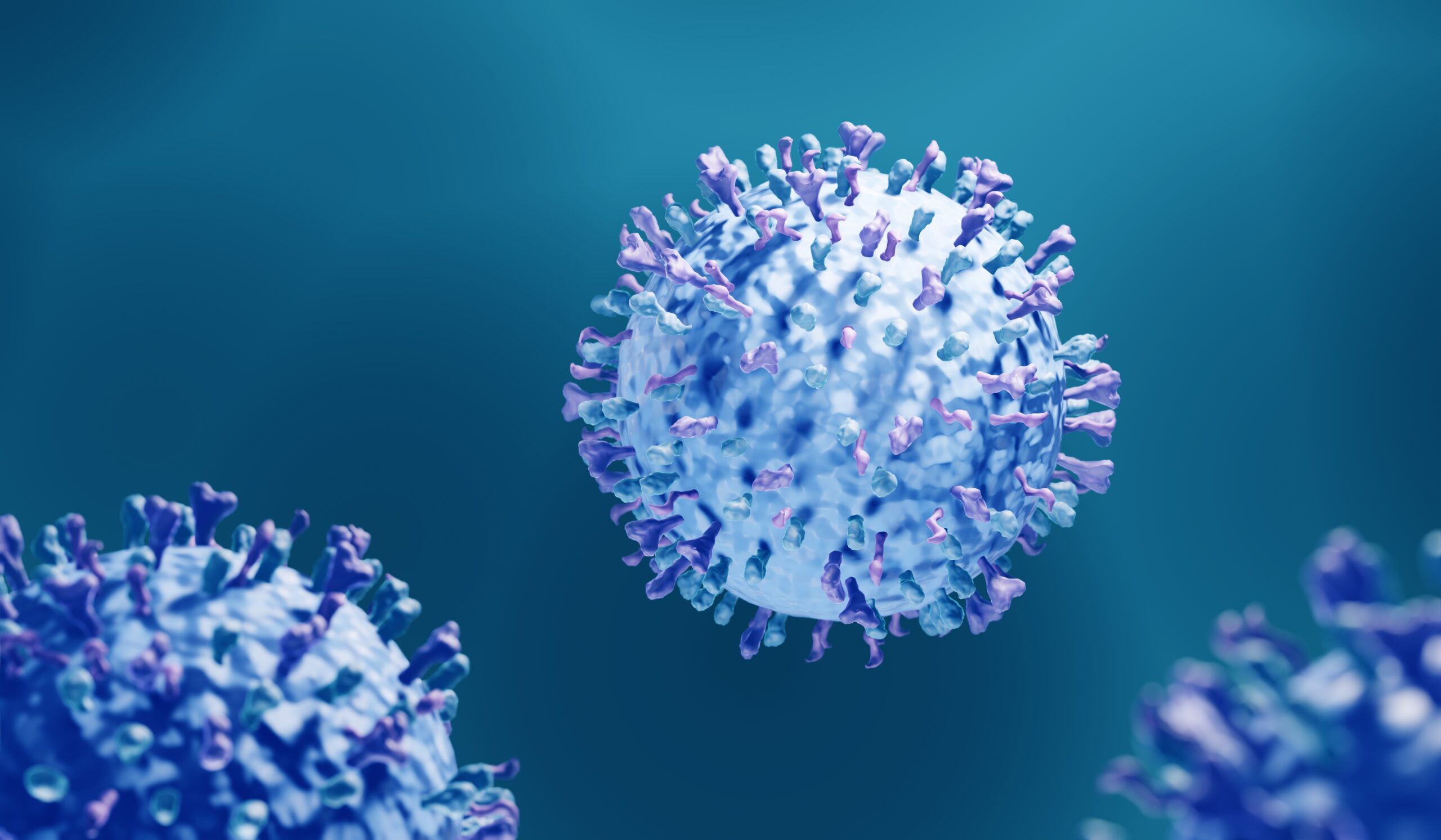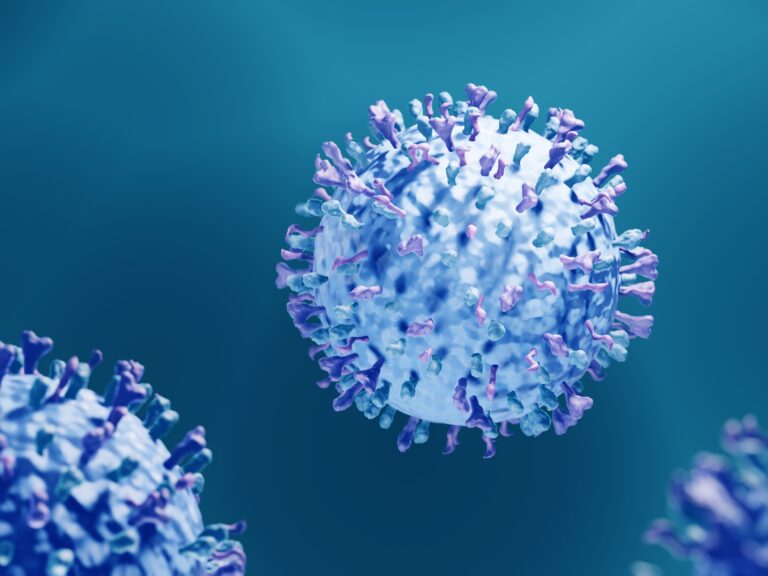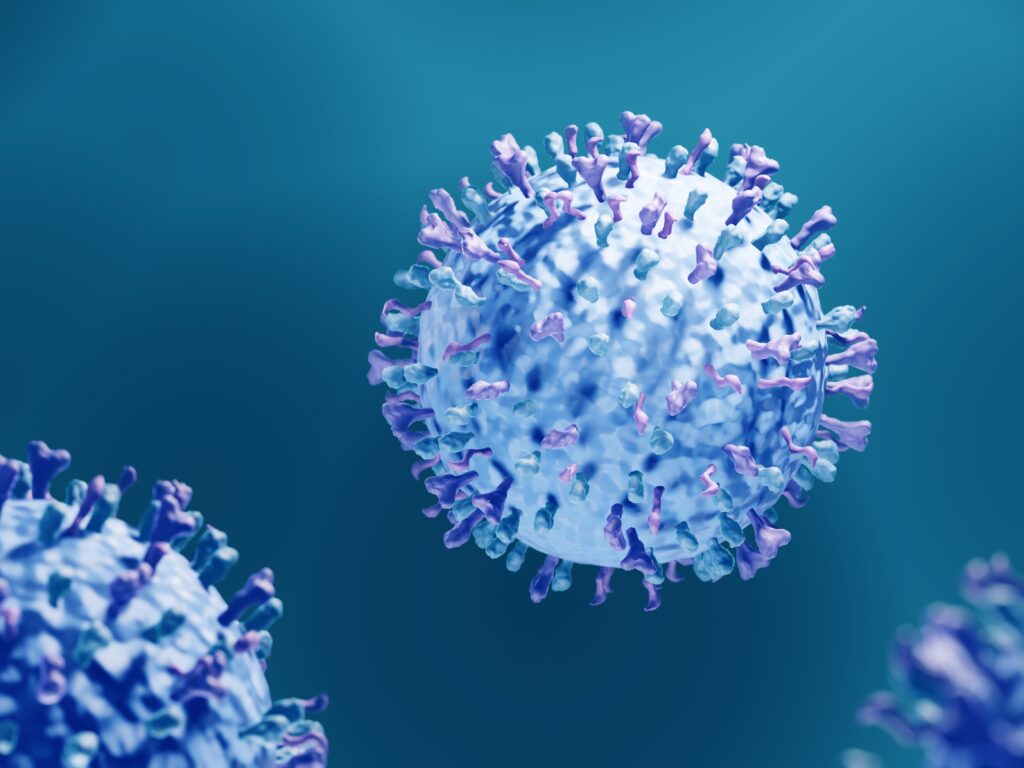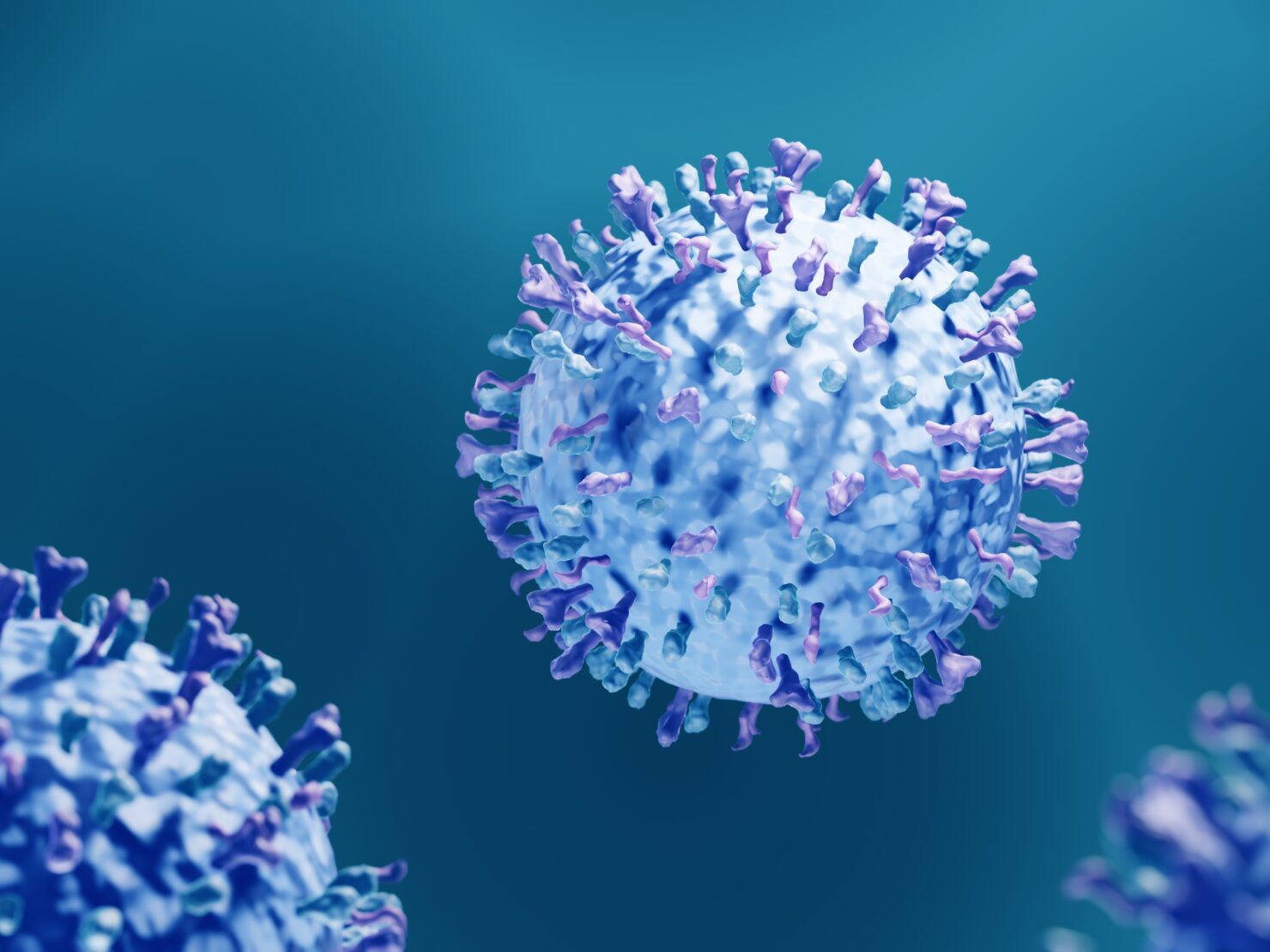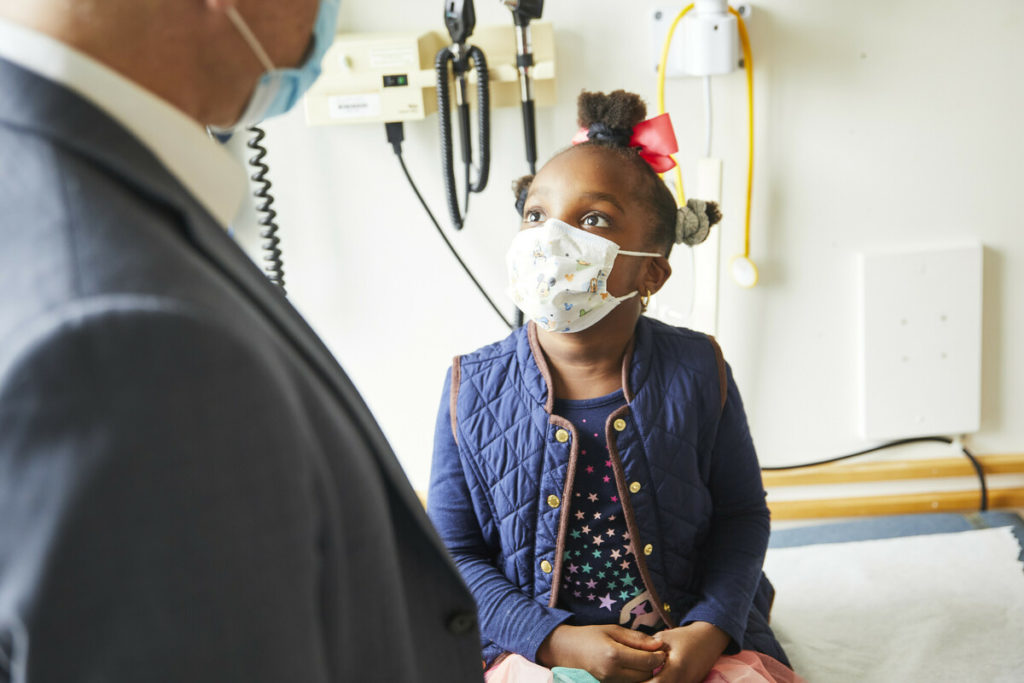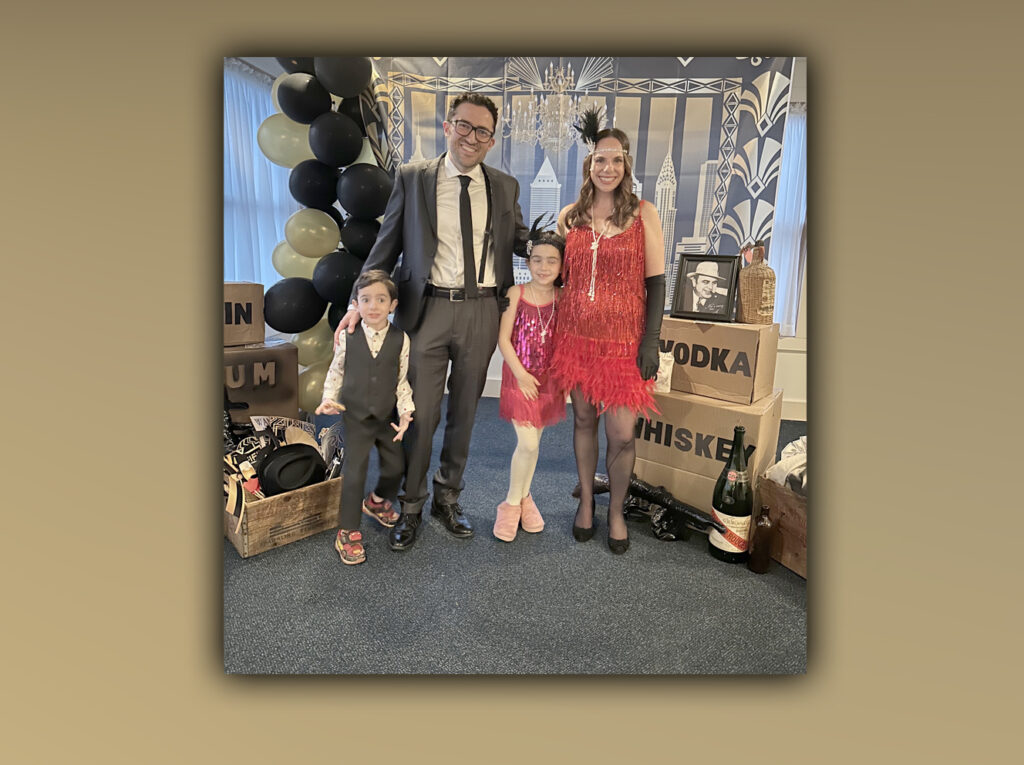Key Takeaways
Respiratory syncytial virus (RSV) is a widely common illness in the United States — it is also the country’s leading cause for hospitalization for children younger than 1 year old. Massachusetts General Hospital pediatrician Chadi El Saleeby, MD has studied the virus since his fellowship in the early 2000s, exploring the clinical and genetic risk factors for severe RSV, as well as novel antivirals and the overall dynamics of the disease. He has also served as a member of the case review and adjudication committee for Pfizer’s maternal RSV vaccine, which the U.S. Food & Drug Administration approved in August 2023.
The winter months mark RSV’s peak, so with many gathering for the holidays, Dr. El Saleeby shared what people should know about RSV and the newly approved vaccines.
What exactly is RSV?
RSV is one of the most common respiratory viruses — everyone gets infected by the age of 3 to 4 years old. About 60 percent of children will have been infected by their first birthday; by the second year of life, this number increases to 95 percent. RSV is a seasonal virus. In the U.S. and the northern hemisphere, RSV activity usually starts in October, peaks around December and January, then slowly tapers down over the next couple of months. It’s much less of a problem outside of winter. The seasonality of viruses is difficult to explain partly because we don’t fully understand where these viruses live outside of their season of activity, but the answer lies in a conglomeration of environmental, social and other factors inherent to each of these viruses.
Before widespread immunization, there were about 1.5 million outpatient visits across the U.S. per year due to RSV. Additionally, about 50,000 to 100,000 people a year were admitted to the hospital. The RSV healthcare burden is very high, and no other virus even comes close to this. RSV has a particular and sole predilection for the respiratory tract. The illness starts quickly, as the virus travels down from the upper to the lower respiratory tract, causing inflammation of the bronchial tubes and narrowing of the airways.
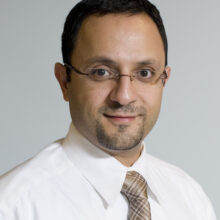
Which populations are at increased risk for severe disease with RSV?
Think about extremes of ages: people who are older than 75 years can have serious RSV infection, as can neonates, infants and young children. RSV causes disease by infecting the airways — the inside linings of our airways are made up of cells, and these are the prime targets for RSV. When those cells become infected, they die and slough off into the airway. The combination of these dead cells and the white cells the body dispatches to fight the infection clog the airways. For young kids whose airways are tiny in caliber, the slightest occlusion can produce a lot of disease. The younger patients are, the more likely the virus will produce severe symptoms.
Other risk factors for severe disease include prematurity, chronic lung disease, certain heart conditions and if a patient is immunocompromised. There are also specific genetic groups, like Native Americans and Alaska Natives, who are more susceptible to serious RSV disease, though we’re not entirely sure why.
What symptoms should people watch out for?
Symptoms usually start with runny nose, congestion and fevers. As the virus travels down the respiratory tract into the lungs, we see problems with rapid breathing and shortness of breath. Serious symptoms to look out for are escalating respiratory difficulties, coughing that is so insistent it causes vomiting, lethargy and changes in skin color indicating lack of oxygen. Also, dehydration is a big part of RSV symptomatology, especially in young infants. These children breathe through their noses while bottle feeding or breastfeeding, so congestion can make adequate sustenance rather difficult.
With the holidays coming up and many people traveling to see loved ones, what should families keep in mind when it comes to RSV?
RSV transmission occurs mainly through aerosolized droplets, when patients cough and produce infectious particles that float in the air. As they settle down, these droplets can contaminate surfaces like doorknobs, tables, utensils and other surfaces that serve as conduits for transmission. Droplets coughed directly on mucosal surfaces like the eyes, nose, mouth and lips can also serve as transmission vehicles for RSV.
The simplest way to protect yourself is through good, diligent, consistent handwashing, and using hand sanitizer. During the holidays, when people are traveling, they might sit next to a person who is coughing. Putting on a face mask will help protect your mouth and nose and reduce the risk of infection. If you are sick yourself, cough in your elbow, use a tissue when blowing your nose and wear a face mask. In households where someone is sick, disinfect contaminated surfaces as frequently as possible. And remember that vaccination for eligible individuals is one of the best ways to protect yourself and your loved ones.
What can you tell us about the new RSV vaccine?
RSV used to be called the boring virus because little was happening in terms of prevention in the past five decades. About seven years ago, there was a technical breakthrough when we were able to freeze the virus before it infects the cell, in a shape that allowed us to produce a safe and effective vaccine. To date, the RSV vaccines have been tested on thousands of individuals. While the vaccines themselves are new, the platform underpinning the science behind these vaccines has been decades in the making.
All individuals 75 years of age and older should get vaccinated with a one-time shot preferably given before the RSV season. For adults who are 60-74 years old, the CDC recommends a select group of individuals with high-risk conditions such as heart disease, lung disease and/or a compromised immune system get the vaccine.
In pediatrics, one of the exciting developments in RSV prevention is the recent introduction of vaccines for pregnant individuals. When pregnant individuals between 32 and 36 weeks of gestational age get vaccinated, they produce antibodies that can fight off RSV. These antibodies can be introduced to the baby through the placenta. This is called passive immunization, and the baby born to a vaccinated individual will be protected against severe RSV disease – at their most vulnerable, during their first six months of life.
For the last 25 years, we had a monoclonal antibody against RSV, which was produced in a lab and able to support the immune system in its fight against the virus. The duration of effectiveness of this product was only one month and babies needed monthly injections during the RSV season to be protected. Now, another exciting development is nirsevimab, a long-acting monoclonal antibody that lasts for an entire RSV season. It is recommended for all infants under eight months of age born right before or during their first RSV season and provides protection for at least six consecutive months. Nirsevimab is also approved for older children who have high risk factors for severe illness.
Why is the new RSV vaccine so important?
The effectiveness of these novel products in preventing severe disease ranges from 60 to 80 percent and from 50 to 80 percent in preventing hospitalization. These vaccines are not perfect in interrupting the acquisition of the infection itself, but they have a great impact in preventing serious complications.
RSV was one of those under-recognized viruses that still caused a lot of problems, and the tools we have to treat the virus remain rudimentary and limited to suctioning secretions from the airways, hydrating the patient and providing fever control. A lot of people have worked years to get to where we are right now. The impact of recent research was a watershed moment in terms of infection prevention. I started studying RSV because I wanted to take on a challenge — the virus had significant morbidity and was underrecognized with limited therapy tools. We now have effective measures to address this illness, and I hope these can soon become available for more populations, communities and countries outside of the U.S.
To learn more about pediatrics or general medicine at Mass General, please contact us.

